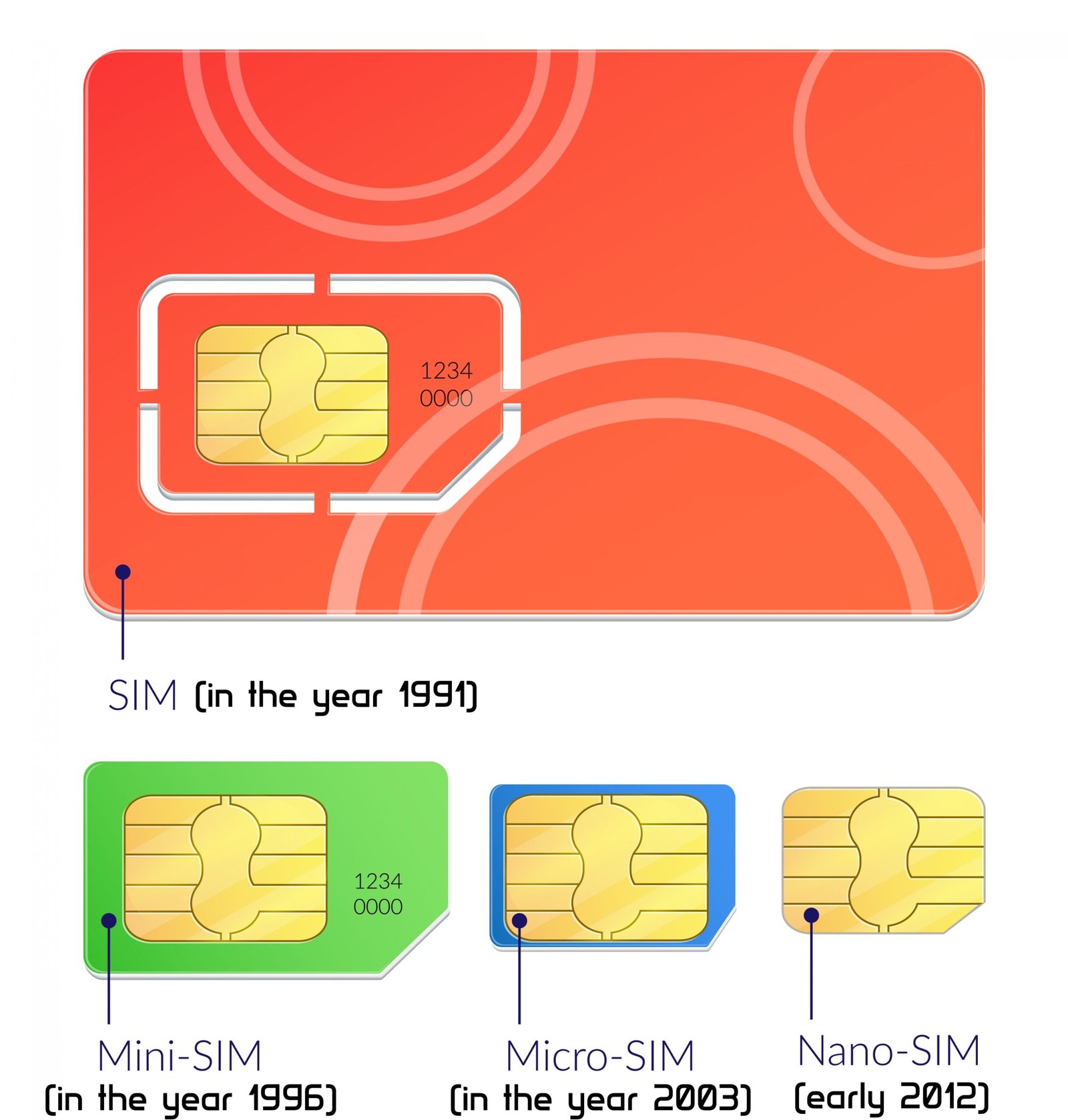eSIM (embedded Subscriber Identity Module ) is a non-removable, (re)programmable version of a traditional SIM. The eSIM technology involves an eSIM being soldered onto the motherboard of the mobile device, thereby enabling a person to connect to any cellular network operator offering eSIM services without the requirement of a physical SIM card.

Fun fact: Microsoft’s Surface Pro LTE was the first Windows 10 device to come up with eSIM technology.
Some of the features offered by an eSIM are:-
- Ability to use SIM card along with eSIM with different cellular plans.
- Label cellular plans and mobile numbers. For example, use one mobile number with cellular plan A for business and another mobile number with cellular plan B for taking personal calls.
- Setting up a default mobile number and also specifying which mobile number to use for attending to calls/messages from a particular contact.
- Provision to choose eSIM cellular plan when travelling, working from home or as alternatives to bad quality or insecure Wi-Fi.
- Use eSIM technology to connect to cellular connectivity enabled Laptops when the internet is down.
Fun fact: Leading French augmented identity and SIM card maker IDEMIA has decided to make India a global hub for manufacturing embedded SIMs, which means, eSIM technology is here to stay!
Let’s get acquainted with eSIM’s predecessor i.e. SIM (Subscriber Identity Module). Every SIM owned by a person helps his/her mobile device to be recognised on a cellular network via a unique identification number commonly known as a mobile number. Also, if a person has purchased an active pre/postpaid plan from a particular cellular network operator, they can enjoy services such as sending/receiving SMSs, making calls, accessing the internet etc based on their chosen network communication plan.
A physical SIM card is portable and non-(re)programmable. This way one can upgrade his/her mobile phone without the need of changing his/her mobile number by simply removing the SIM card from one mobile device and inserting it into the other.
The concept of SIM has been around for ages and its been evolving ever since especially by downsizing. Take a look at the picture below to get a clear idea of the evolution of SIM.

Difference between SIM, eSIM and eUICC-enabled SIM
Discussion | SIM | eSIM | eUICC-enabled SIM |
Abbriviation | Subscriber Identity Module | embedded Subscriber Identity Module | embedded Universal Integrated Circuit Card-enabled Subscriber Identity Module |
Definition | Enables a mobile device to be recognised on a cellular network via its mobile number | eSIM works similar to a traditional SIM, but without the need of a physical SIM card | eUICC is a software that can be installed in any SIM/eSIM in order to enable eSIM services |
Design | Usually sits in a special tray that slides into a mobile device like a drawer | eSIM chip is embedded onto the mobile devices' motherboard | -- |
Programming | Non-(re)programmable | Its a whole ecosystem i.e. eSIM chip+built-in eUICC software | Its a SIM/eSIM with enabled eUICC software and can be (re)programmed over-the-air (OTA) |
Security | SIM card is robust in design. However, if a mobile device gets stolen, one can easily remove its SIM card and insert a new one moving the mobile phone onto a new network | Programmed to request verification from cellular network operator whenever anyone tries to change/download a new profile onto the mobile device | Offers equivalent level of security and protection unlike any SIM/eSIM |
Benefits | Portable | Enhanced mobile device hardware design by eliminating the need of a physical SIM tray. Also the cellular networks are managed at software layer granting immediate access to latest network features as soon as available | Ability to run over-the-air (OTA) provides central management of multiple cellular network operator profiles |
Future Enhancements
Here are some of the enhancements of eSIM technology which we might witness in the near future:-
- Enhanced mobile device hardware design such as larger battery, more sensors and overall downsizing in the absence of a SIM tray. This could be vital for wearable design.
- eSIM is going to play an important role in the IoT (Internet of Things) as this technology is already embedded in cars, wearables, home appliances, industrial machines etc.
- When more devices start adopting the eUICC (embedded Universal Circuit Card) standards, everyone will be able to swap between cellular network plans without removing the SIM.
References:
- https://support.apple.com/en-in/HT209044
- https://digitaltrends.com/mobile/esim-explainer/
- https://cellulardata.ubigi.com/help-center/fag/esim-data-plan/what-is-an-esim/
- https://www.business-standard.com/article/companies/india-to-be-global-hub-for-manufacturing-esims-with-idemia-s-help-121061600018_1.html
- https://fiercewireless.com/tech/could-esim-technology-make-your-smartphone-less-secure
- https://blog.jtiot.com/euicc-and-esim-are-they-the-same-thing
- https://hologram.io/blog/clearing-up-the-term-esim
- Explore Electronic Design Simulators with Arduino MAX7219 Heart Match Game - October 30, 2025
- The Future of Quantum Computing: What Will We Choose to Do? - September 27, 2025
- Word Clock using MAX7219 LED Dot Matrix Display - August 5, 2025
